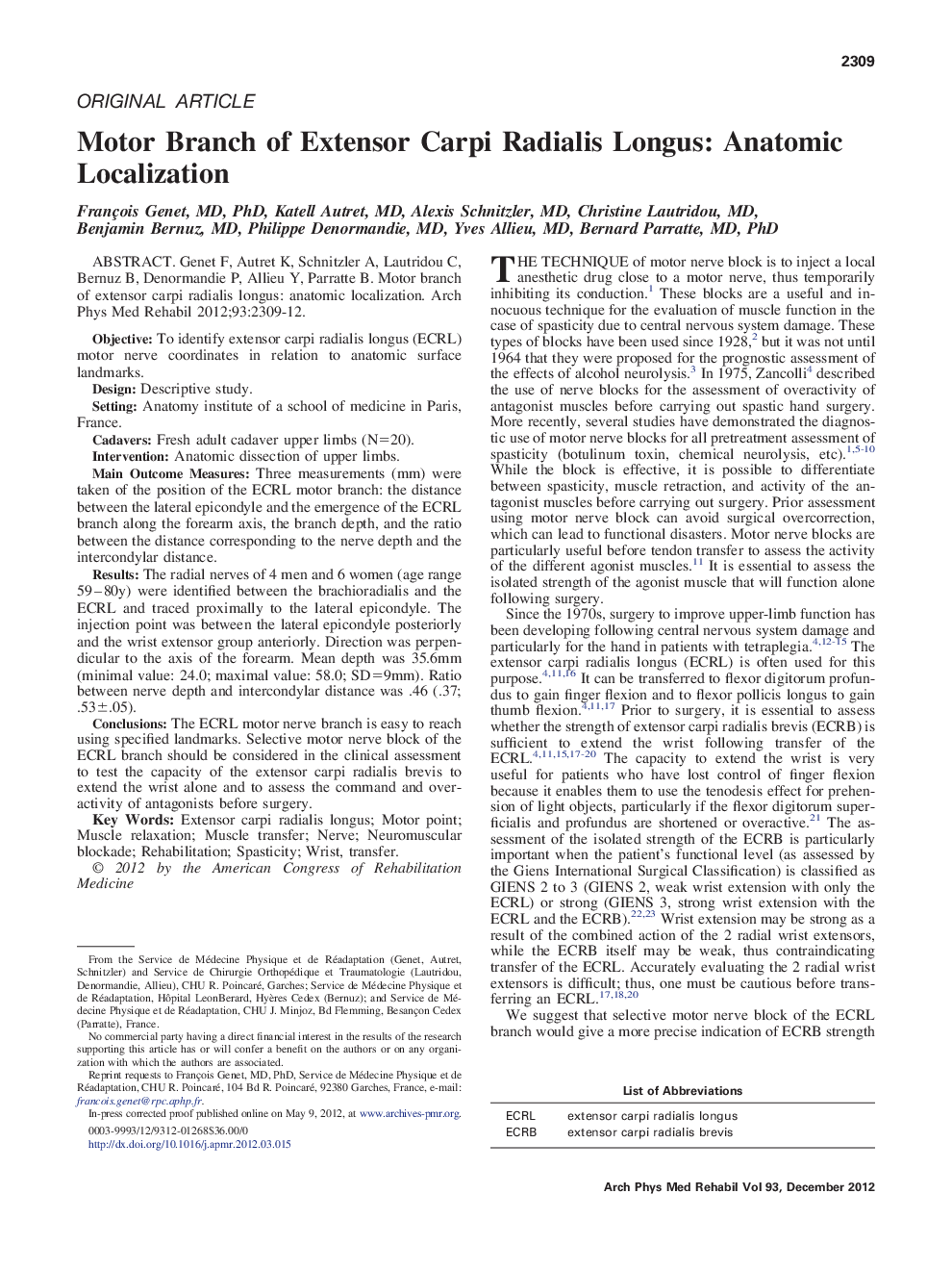| Article ID | Journal | Published Year | Pages | File Type |
|---|---|---|---|---|
| 3449299 | Archives of Physical Medicine and Rehabilitation | 2012 | 4 Pages |
Genet F, Autret K, Schnitzler A, Lautridou C, Bernuz B, Denormandie P, Allieu Y, Parratte B. Motor branch of extensor carpi radialis longus: anatomic localization.ObjectiveTo identify extensor carpi radialis longus (ECRL) motor nerve coordinates in relation to anatomic surface landmarks.DesignDescriptive study.SettingAnatomy institute of a school of medicine in Paris, France.CadaversFresh adult cadaver upper limbs (N=20).InterventionAnatomic dissection of upper limbs.Main Outcome MeasuresThree measurements (mm) were taken of the position of the ECRL motor branch: the distance between the lateral epicondyle and the emergence of the ECRL branch along the forearm axis, the branch depth, and the ratio between the distance corresponding to the nerve depth and the intercondylar distance.ResultsThe radial nerves of 4 men and 6 women (age range 59–80y) were identified between the brachioradialis and the ECRL and traced proximally to the lateral epicondyle. The injection point was between the lateral epicondyle posteriorly and the wrist extensor group anteriorly. Direction was perpendicular to the axis of the forearm. Mean depth was 35.6mm (minimal value: 24.0; maximal value: 58.0; SD=9mm). Ratio between nerve depth and intercondylar distance was .46 (.37; .53±.05).ConclusionsThe ECRL motor nerve branch is easy to reach using specified landmarks. Selective motor nerve block of the ECRL branch should be considered in the clinical assessment to test the capacity of the extensor carpi radialis brevis to extend the wrist alone and to assess the command and overactivity of antagonists before surgery.
